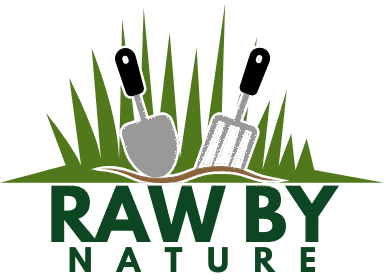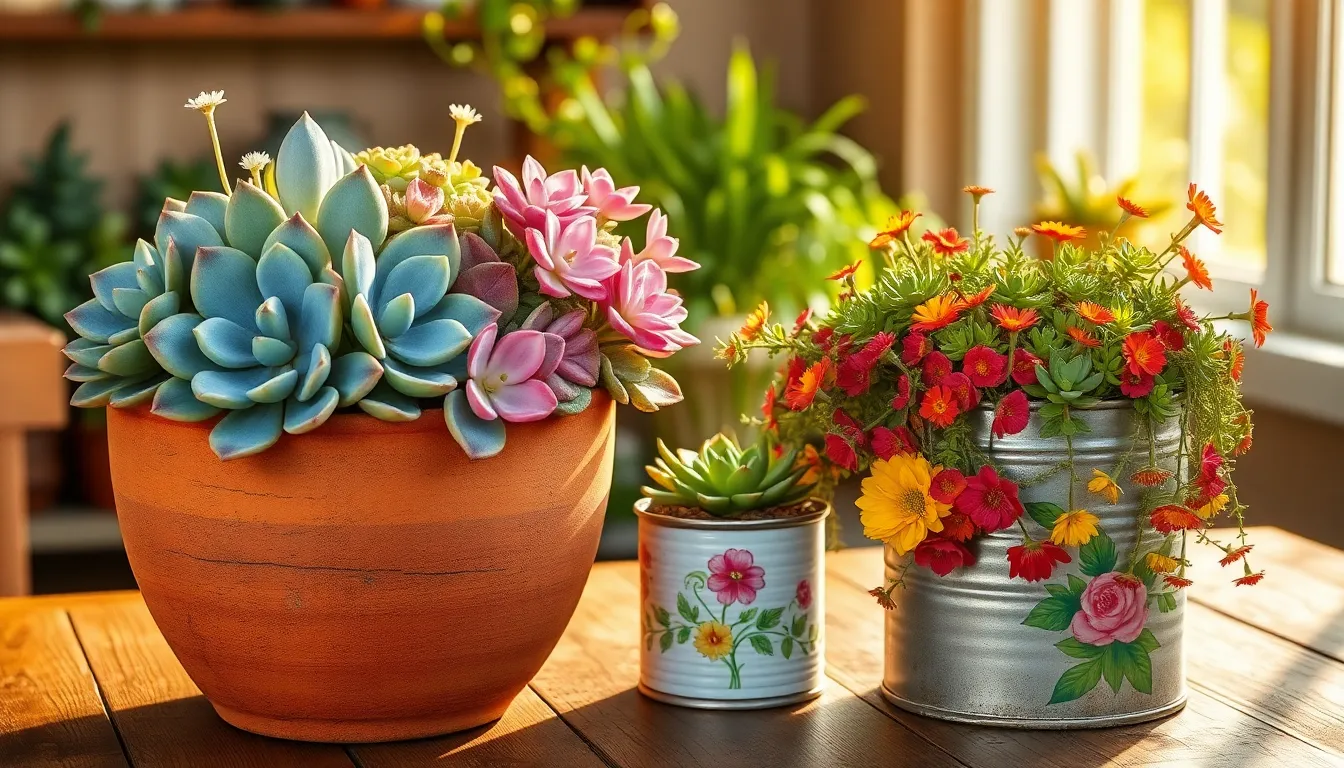Growing succulents in containers is a delightful way to bring a touch of nature’s resilience into your home or garden, no matter your level of gardening expertise. These charming plants, known for their ability to store water in their leaves, offer a perfect blend of beauty and adaptability, making them an ideal choice for both beginners dipping their toes into the gardening world and seasoned green thumbs looking to expand their plant repertoire.
By exploring the art of container gardening with succulents, you’ll unlock a world of creativity and simplicity that is both rewarding and visually stunning. This guide will equip you with the essential knowledge to select the right containers, soil, and succulent varieties, ensuring your plants not only survive but thrive. As you navigate through this article, you’ll discover practical tips and tricks to maintain your succulent’s health, from understanding their unique watering needs to maximizing sunlight exposure. Whether you’re looking to create a stunning centerpiece for your coffee table or a vibrant outdoor display, growing succulents in containers offers endless possibilities to express your gardening passion.
Select Suitable Succulent Varieties
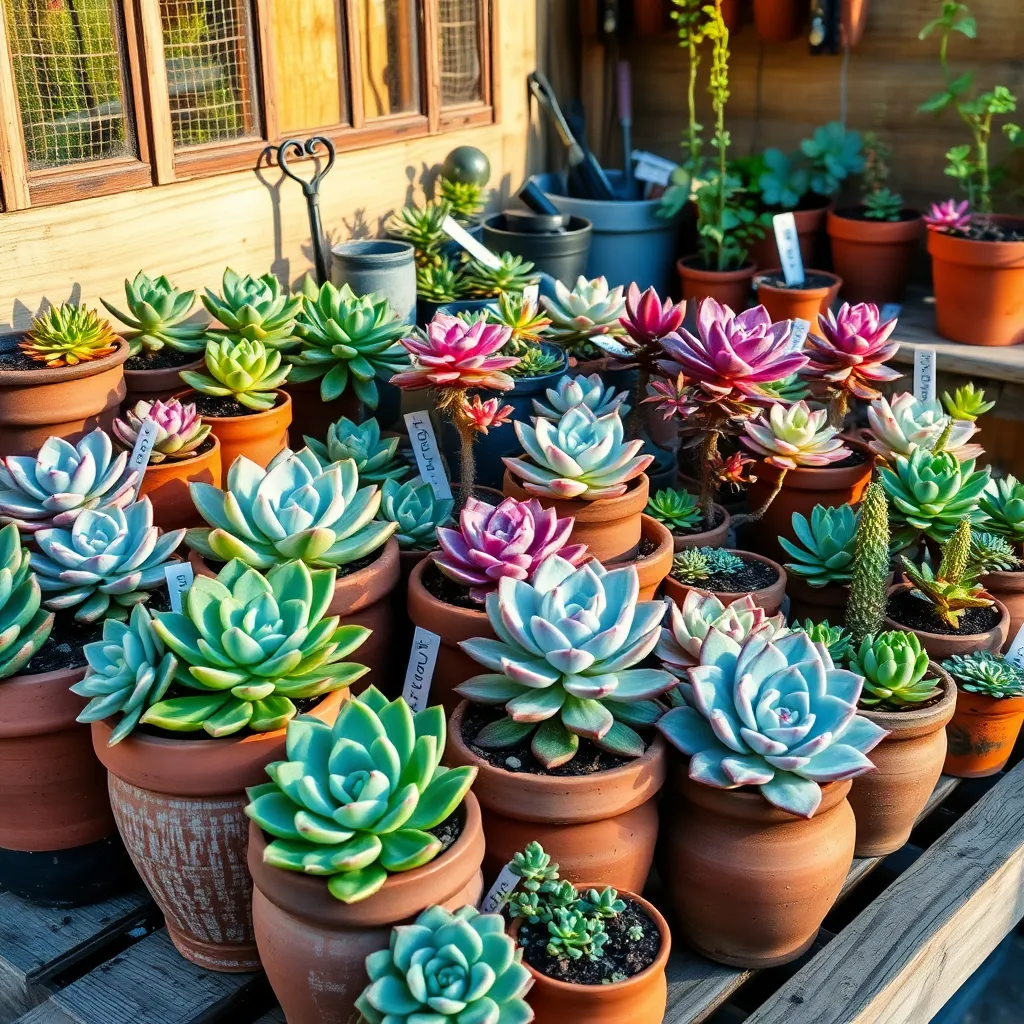
When selecting succulents for container gardening, consider varieties that thrive in your specific lighting conditions. Echeveria and Haworthia are excellent choices for beginners, as they adapt well to both bright indirect light and direct sunlight.
It’s important to choose succulents that complement one another in terms of growth habits and water needs. Combine rosette-forming succulents like Echeveria with trailing varieties such as String of Pearls to create visually stunning container arrangements.
For those looking to add a pop of color, succulents like Crassula ovata ‘Gollum’ and Aloe ‘Blue Elf’ are fantastic options. These varieties not only offer unique shapes but also display vibrant hues that enhance any container garden.
Ensure your chosen succulents fit well in their container without overcrowding. This allows each plant to receive adequate air circulation and space to grow, which is crucial for their health and longevity.
Choose the Right Container

Choosing the right container is essential for the successful growth of your succulents. It’s important to select a container that offers adequate drainage to prevent root rot, which succulents are particularly susceptible to.
Opt for containers with drainage holes at the bottom to allow excess water to escape. If you have a pot you love without drainage holes, consider drilling holes yourself or using it as a decorative outer cover for a smaller pot with proper drainage.
Material choice also plays a crucial role in the health of your succulents. Terracotta pots are excellent because they are porous, allowing air and moisture to move through the sides, helping the soil dry out between waterings.
In contrast, plastic containers retain moisture longer, so be cautious with watering. Use a well-draining soil mix specifically designed for succulents and cacti, which typically includes sand, perlite, or pumice to facilitate drainage.
Prepare Well-Draining Soil Mix

To grow succulents successfully in containers, it’s essential to prepare a well-draining soil mix. Succulents are native to arid regions and prefer soil that allows excess water to escape easily.
A basic mix can be created by combining regular potting soil with coarse sand and perlite. Use a ratio of 2 parts potting soil, 1 part coarse sand, and 1 part perlite to ensure adequate drainage and aeration.
For those looking to take their soil mix to the next level, consider adding pumice or crushed granite. These materials improve drainage even further and provide a more stable base for succulent roots.
When mixing your soil, ensure all components are thoroughly combined to prevent water retention pockets. This is particularly important for larger containers where uneven soil mix can lead to root rot.
After preparing the soil, fill your container about three-quarters full, allowing space for the succulent and any top dressing you might use. Top dressings such as small pebbles or decorative rocks not only enhance aesthetics but also help reduce moisture loss from the soil surface.
Plant Succulents with Care
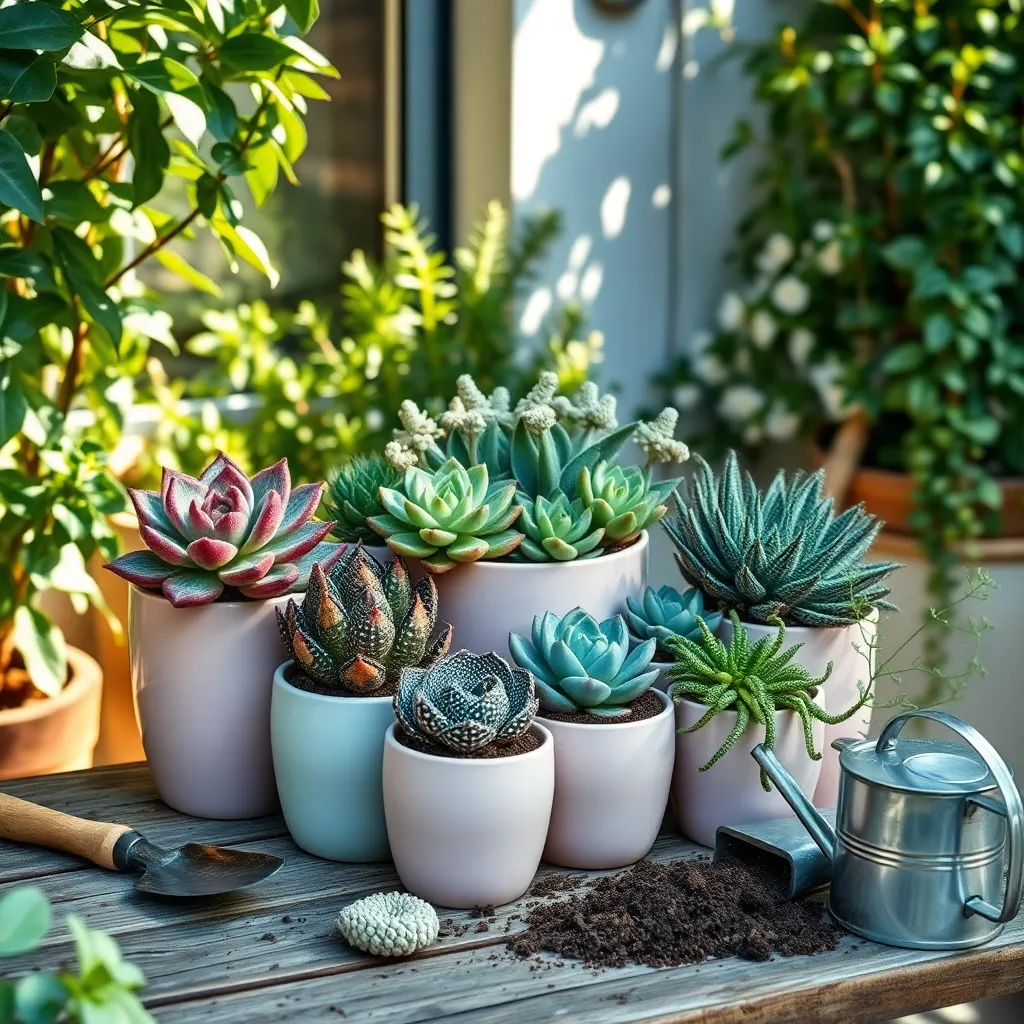
After preparing your well-draining soil mix, it’s time to plant your succulents with care. Begin by selecting a container with drainage holes, as succulents are prone to root rot if water accumulates. Ensure the container is appropriately sized, providing enough space for the roots to grow while avoiding excess room that can retain moisture.
Before planting, gently remove any excess soil from the roots of your succulents. This helps them adapt to their new environment and reduces the risk of introducing pests or diseases. Position the succulent in the center of the container, ensuring it sits at the same depth as it was in its previous pot.
Carefully fill in around the plant with your prepared soil mix, lightly pressing it down to eliminate air pockets. Leave a small gap between the soil and the rim of the pot to allow for proper watering. Avoid burying the succulent leaves in the soil, as this can lead to rot and other issues.
Water the newly planted succulents sparingly, waiting until the soil is completely dry before the next watering. Overwatering is a common mistake that can be avoided by using the “soak and dry” method—allowing the soil to dry out completely between waterings. This technique mimics the plant’s natural desert habitat, promoting healthy growth.
Ensure Proper Watering Routine
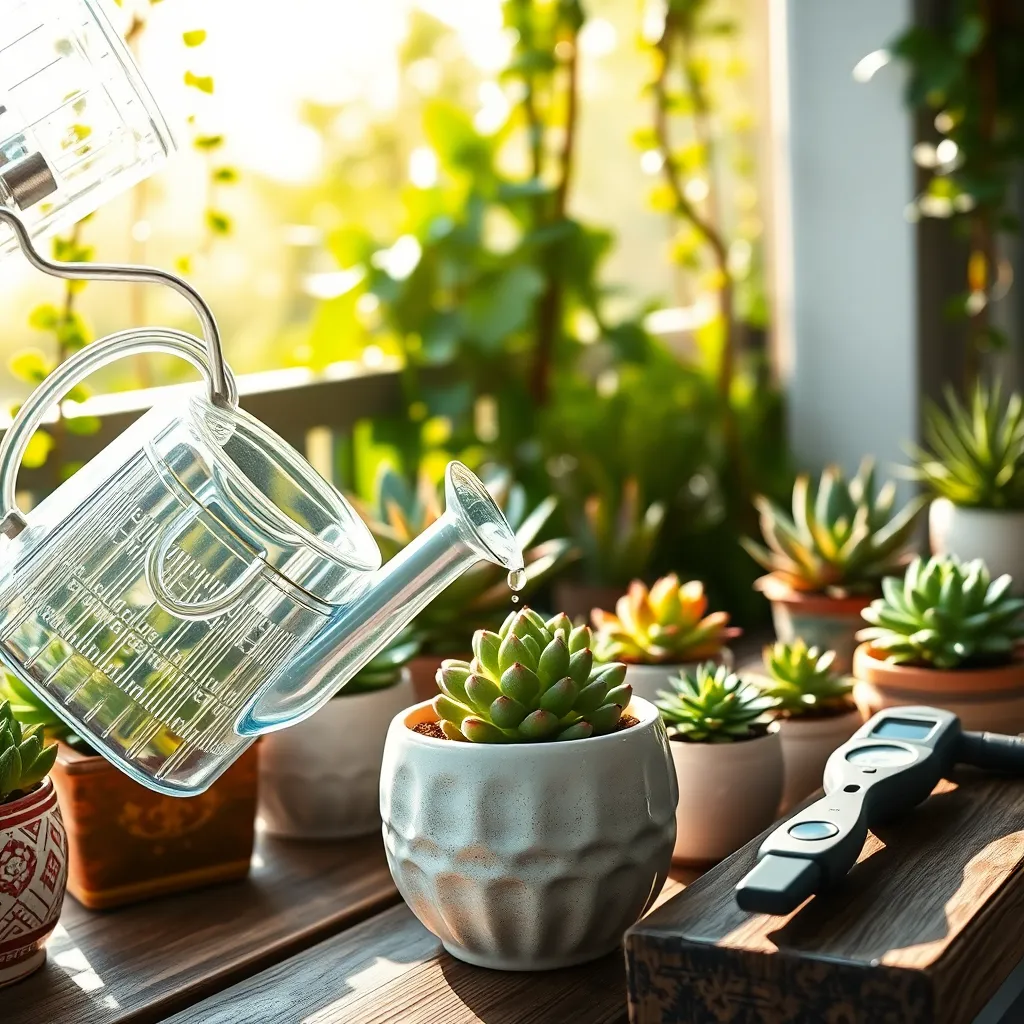
Watering succulents properly is crucial to their health, especially when they are grown in containers. Overwatering is the most common mistake gardeners make, so be sure to let the soil dry out completely between waterings.
To determine when it’s time to water, insert your finger about an inch into the soil; if it feels dry, it’s time to water. Alternatively, you can use a moisture meter for more precise measurement, which is particularly useful for beginners.
Consider the type of container you are using; containers with drainage holes are essential to prevent waterlogging, a condition that succulents cannot tolerate. Using a well-draining soil mix, such as one designed for cacti and succulents, helps excess water escape quickly.
Adjust your watering routine seasonally, as succulents typically need less water in the winter when they are dormant. During their growing season in spring and summer, you might need to water them every one to two weeks, depending on humidity and temperature.
Conclusion: Growing Success with These Plants
In our journey through “How to Grow Succulents in Containers,” we’ve uncovered five essential relationship concepts that mirror the nurturing of your green companions. First, understanding the unique needs of your succulents is akin to recognizing the distinct needs of your partner. Second, creating the right environment—whether it’s soil for plants or emotional space for loved ones—lays the foundation for growth. Third, consistency in care, much like consistent communication, fosters deep-rooted bonds. Fourth, adaptability allows both plants and relationships to thrive amidst change. Lastly, patience is the cornerstone of any flourishing relationship, as growth takes time.
To immediately put these principles into action, take a moment today to assess how you can better meet the needs of your relationship, whether through a heartfelt conversation or a simple gesture of love. As you embark on this nurturing journey, remember to save this article for future reference—a handy guide to cultivating both your succulents and your relationships.
Looking forward, know that with intentional care and attention, your relationships, like your succulents, will not only survive but thrive, offering a beautiful testament to your dedication. Embrace this growth as a shared journey, and watch as both your garden and your connections flourish.
